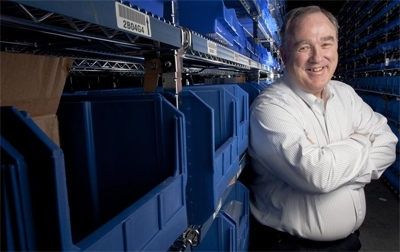Resources
Eight Things You Should Know about Valin® Corp.
Submitted by Cromwell Schubarth, Featured in Silicon Valley Business Journal

Valin® Corp. has more than doubled since CEO Joseph Nettemeyer began diversifying the 38-year-old industrial process and supply company away from its chipmaking industry roots in 2001. Valin®'s fastest-growing business is energy: It has a very strong presence now in the oil and gas fields. A key deal came when Valin® acquired Systems Measurement Services in Bakersfield in 2010, which provides systems at the wellhead that helps to separate and measure the amount of oil and gas coming out of it. It also helps wind power companies by designing ways for them to network their towers and had good revenue from the solar industry but that is slowing down. The tragic San Bruno gas pipeline explosion last year has led to business for Valin® in developing better ways to monitor and control gas, Nettemeyer said.
Nettemeyer spoke on Oct. 25 to the Business Journal just before an official ribbon cutting of the company's new headquarters in North San Jose, where it recently moved from Sunnyvale.
When he joined the company nearly 12 years ago, Valin®'s revenue had plunged by two-thirds, dropping from $75 million to $25 million, reeling from a downturn in the chip industry. In its most recent fiscal year, revenue grew to $150 million and the percentage of its revenue from the chip industry has dropped from 90 percent in 2001 to 25 percent today.
Here is what you need to know about San Jose's newest big private company:
Put that in your pipe: Nettemeyer's elevator pitch about what Valin® does goes like this, "If you are going to put something through a pipe - liquid, gases, fluids - we can help you manage the process. We can help you control it, we can help you filter it, we can help you heat it, we can help you measure it, we can help you automate it and we can help you network it."
27 acquisitions later: For the past 11 years, Valin® has acquired 27 companies and now sells to 15 industries. Besides the original chipmaker supply business, it is now in petroleum refining, power generation, chemical processing, measurement and analytical systems, industrial machinery, water and wastewater, scientific research, aerospace, pharmaceuticals, biotechnology and food and beverage. Nettemeyer said the 28th acquisition could come in November but it hasn't been officially completed, so he declined to disclose details of that deal yet.
Escaping chipmaking's volatility: "The tech industry usually leads us out of a recession and leads us into a recession. The energy industries and some of these others go into recession later and come out of it later. So we've smoothed the shark-tooth pattern of just being in the tech sector," the CEO said, explaining his diversification strategy.
Valin® doesn't need outside money: Nettemeyer estimates that Valin® is acquiring $15 million to $20 million annually in revenue through mergers and acquisitions and is self-funding all of that.
Big tech customers: Valin® is one of Applied Materials' four strategic global distributors. It also had significant revenue from both Lam Research and Novellus Systems before they merged this year. "Their combination has produced a very large customer for us," Nettemeyer said. "We also have a long-term relationship with Intel and their plant expansions in Oregon, Arizona and New Mexico have been very good for us."
Most of what Valin® sells is developed by others: Nettemeyer estimates that about 35 percent of Valin®'s business is related to selling things that it develops. About 65 percent of its revenue comes from wholesale distribution of fluid handling, measurement and control products made by other companies.
Valin®'s private owners include its employees: "We have 280 employee owners and they share in the long-term benefit of the business," Nettemeyer said. "Every year the company funds their pension program." About 6 percent of each employee's income goes into the ESOP (employee stock ownership plan), started in 1988. Nettemeyer said the company has never failed to make a contribution. It has gone from 30 percent employee ownership in 2001, when he joined the company, to 100 percent in 2007.
Read the article on The Business Journal website.
A lesson for me is that I need to involve you earlier in the program.
You were tireless in your support and it will not be forgotten!
Latest from Valin's Blog
The NIST Chemistry WebBook contains a great deal of information regarding the properties of a broad range of chemicals and is helpful for those who deal with chemical processes.In this article, Jon Monsen has outlined the procedure for finding the actual density of a gas using the WebBook.
